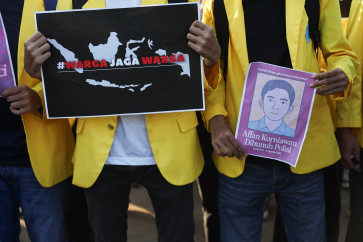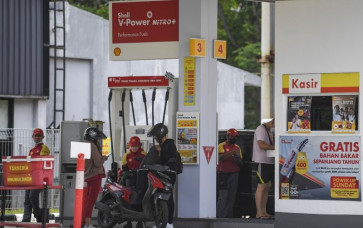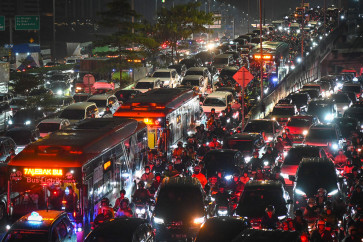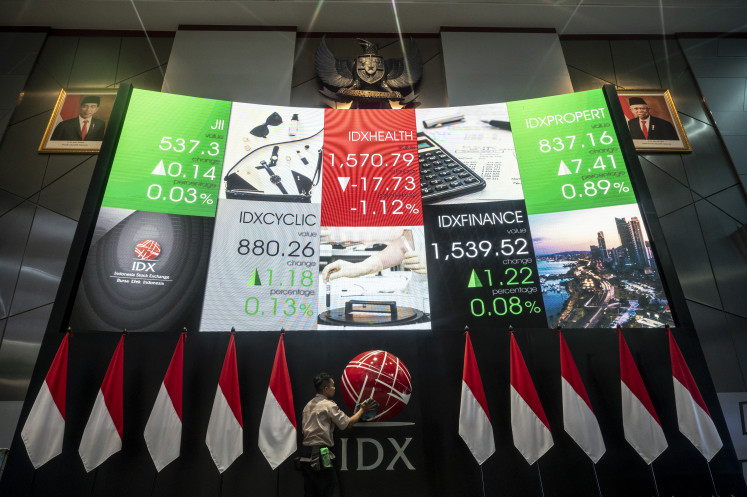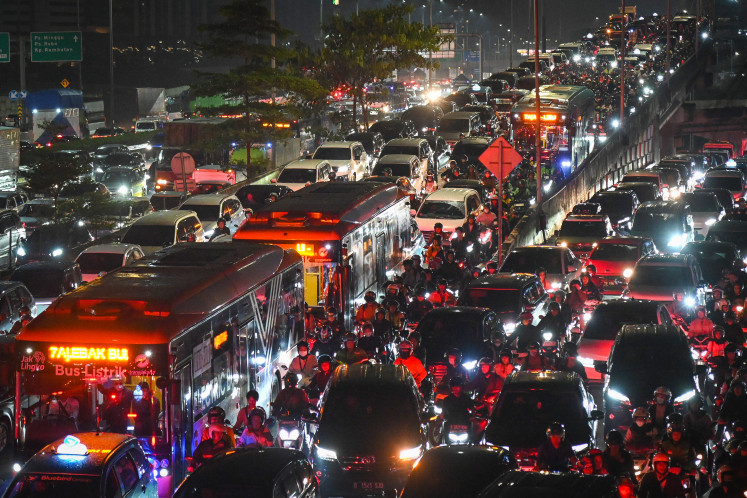Popular Reads
Top Results
Can't find what you're looking for?
View all search resultsPopular Reads
Top Results
Can't find what you're looking for?
View all search resultsPGN's Lampung LNG receiving terminal to start operation
State-owned gas distributor PT Perusahaan Gas Negara (PGN) expects to commence operation of the companyâs floating storage and regasification unit (FSRU) in Lampung in July this year, in line with the initial schedule
Change text size
Gift Premium Articles
to Anyone
S
tate-owned gas distributor PT Perusahaan Gas Negara (PGN) expects to commence operation of the company's floating storage and regasification unit (FSRU) in Lampung in July this year, in line with the initial schedule.
'The construction of the receiving terminal's supporting facilities will be completed in June. After conducting a trial operation, the LNG terminal will be officially operated in July,' PGN vice president for corporate communication Ridha Ababil told reporters during a visit to the facilities on Saturday, as quoted by Antara.
The Lampung FSRU, also called a LNG receiving terminal, is a 46 meter wide LNG vessel with a storage capacity of 170,000 cubic meters. The vessel is also equipped with a regasification facility, with a capacity of 240 million standard cubic feet per day (mmscfd).
The gas from the Lampung FSRU will be distributed through a gas pipeline to meet the growing gas demand from households and industry in Lampung, and in western part of Java, he said.
He said that the vessel was operated by Norway-based Hoegh, an LNG transportation and services company under a 25-year contract. PGN has spent about US$250 million on rental costs and expenses for other facilities.
The vessel was built by world's top shipbuilder Hyundai Heavy Industries.
The Lampung terminal is PGN's second FSRU, after the West Java FSRU, which began operation in 2012. The West Java terminal is operated by Nusantara Regas, a joint venture between PGN and state-owned oil company PT Pertamina.
Ridha hoped that the government would produce policies that could make the price of LNG more competitive.
He said such a policy was needed as the use of LNG terminal would hike transportation costs, which would in turn cause end-user prices to be higher than gas provided through pipelines.
'The Lampung FSRU will make the LNG distribution chain longer. As a result, LNG will be more expensive,' he said.
'I hope the government can do something to make the price more competitive. If the price is cheaper [the industries] surely will use it.'
For the distribution of the gas from the Lampung LNG receiving terminal, PGN has built a 90-kilometer gas pipeline distribution network in Lampung. It is planned that pipeline would be expanded to 100 kilometers.
The electricity sector in Lampung needs around 30 mmscfd of natural gas. One mmscfd of natural gas is equal to 28,000 liters of oil fuel per day, which can be used to run a generator with a capacity of four to five megawatt. (ask)


